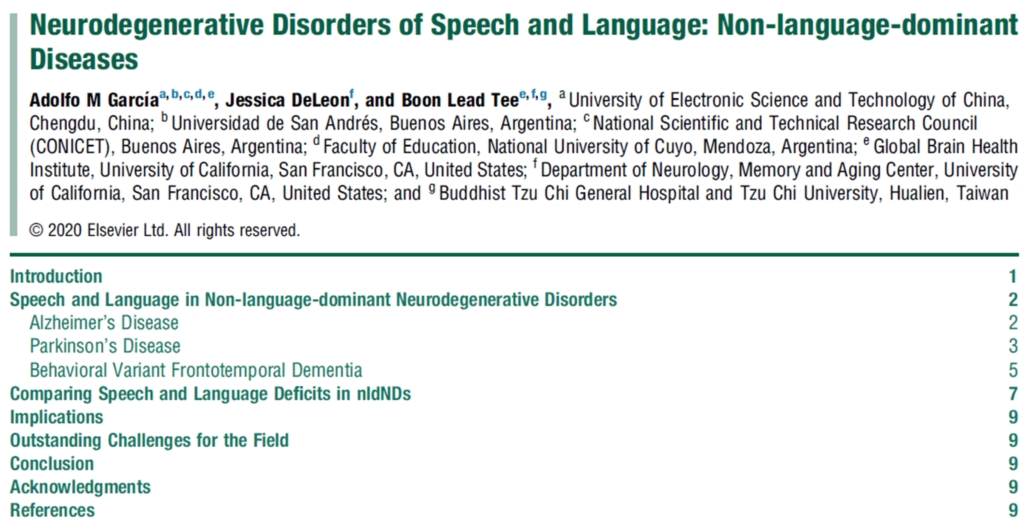Neurodegenerative disorders of language and speech: Non-language-dominant diseases
Encyclopedia of Behavioural Neuroscience
García, A. M., Deleon, J. & Tee, B. L. (2020). Neurodegenerative disorders of language and speech: Non-language-dominant diseases. Encyclopedia of Behavioural Neuroscience, segunda edición. Nueva York: Elsevier. Online: https://bit.ly/2HT0gQX
En este capítulo recorremos los principales déficits lingüísticos de tres enfermedades neurodegenerativas no primariamente lingüísticas: la enfermedad de Alzheimer, la enfermedad de Parkinson y la variante conductual de la demencia frontotemporal. Identificamos, nivel por nivel, qué funciones verbales se ven mayormente afectadas, cuáles presentan mayor preservación y cuáles las alteraciones cerebrales subyacentes de las primeras.
Neurodegenerative disorders of language and speech: Non-language-dominant diseases
Encyclopedia of Behavioural Neuroscience
García, A. M., Deleon, J. & Tee, B. L. (2020). Neurodegenerative disorders of language and speech: Non-language-dominant diseases. Encyclopedia of Behavioural Neuroscience, segunda edición. Nueva York: Elsevier. Online: https://bit.ly/2HT0gQX
Speech and language networks span vast cortical and subcortical regions in the human brain, including putative perisylvian areas but extending well beyond them. Accordingly, relevant functions can be compromised by diverse neural disruptions even in non-language-dominant neurodegenerative diseases (nldNDs) –i.e., conditions that are not primarily typified by speech or language dysfunction. The present chapter offers a systematic overview of this topic, focusing on the three most prevalent nldNDs (Alzheimer’s disease, Parkinson’s disease, and behavioral variant frontotemporal dementia). In each case, we offer detailed descriptions of spared and impaired skills across speech/language levels (phonetics, phonology, lexico-semantics, morphosyntax, discourse-level processing) and multidimensional accounts of their core neural signatures (including patterns of brain atrophy and tractographic abnormalities as well as alterations in regional activation, functional connectivity, event-related potentials, and oscillatory modulations). Next, we offer a brief contrastive summary of the core patterns in each disease. Finally, we address the main implications of the evidence and the prime challenges facing the field in the immediate future. Briefly, this chapter provides a fine-grained, multimodal, transnosological view of speech and language disruptions beyond the diseases typically associated with them.



